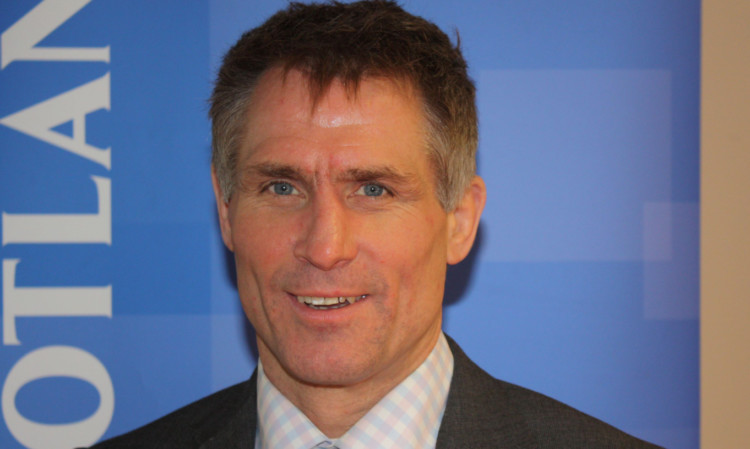Farmers have at last been given a fair estimate of how much their Single Farm Payments will be worth from 2015 to 2020.
Jonnie Hall, director of policy and the regions for NFU Scotland, told a crowded meeting in Perth on Tuesday evening that the political process of creating the new CAP was all but over and now it was up to the Scottish Government to provide the implementing rules.
Everyone had expected Rural Affairs Minister Richard Lochhead to issue a consultation before the NFUS started its series of roadshows round the country but this had not happened.
Mr Hall had, however, run his analysis past SG officials and it would be surprising if the information he imparted on Tuesday evening is much different from the official position.
As expected the SFP will be paid out wholly on an area basis with each farm treated separately with different values allocated to possibly three land use types.
These would be rough grazing, permanent grass and arable/temporary grass.
Mr Hall pointed out that Scotland has one of the most diverse farming landscapes in Scotland and many farms would have two or even three of these land use categories within their boundaries.
Mr Lochhead will, however, have to decide how he splits what is a quite restricted budget between these three land uses.
If he was to decide to split the SFP cake 50% to arable/temporary grass, 40% to permanent grass and 10% to rough grazing the payments would be e266 per hectare to arable/temporary grass, e240 per hectare to permanent grass and e17 per hectare to rough grazing.
Mr Hall reminded his audience that these figures would vary widely if Mr Lochhead chose a different split or indeed if he decided to have a two-way split and only recognise rough grazing and non-rough grazing as categories.
There is, however, surprisingly little leeway if the allocation is going to be fair.
Coupled payments for beef calves will have an important part to play if NFUS’s important principle of only rewarding active farmers is to be recognised.
As an example he quoted a model whereby the first 40 calves of 75% beef genetics born each year would receive a coupled payment of e200 per head and the remainder would attract a e70 payment.
There were other models which would “front load” the coupled payments, say by having a larger payment on the first 10 calves.
There is also the divisive issue of bringing calves with 50% beef genetics from the dairy herd into the scheme.
These calves, Mr Hall suggested, might attract a flat rate payment of e70 per head.
The Scottish sheep industry has to date rejected coupled payments for ewes or lambs on the grounds that the administration involved would outweigh the advantage.
Mr Hall accepted that to an extent but said NFUS believed it would be difficult to retain hill ewe numbers without some extra incentive.
He offered the intriguing prospect of having an area-based coupled payment or “top-up” available for all those with a sheep stocking density of more than 0.08 livestock units per hectare.
In broad terms this could add another e15 per hectare on to the rough grazing SFP.
It was an attractive prospect, added Mr Hall but there was a snag.
Scotland was only allowed to allocate 8% of its CAP budget to coupled payments and the beef calf scheme would need every penny of these funds.
The only way forward would be for Defra Secretary Owen Paterson to allow Scotland to use some of England’s unused coupled payment ceiling.
This would not bring in any more funding but it would allow Scotland to boost coupled payments to 12% of the budget, the maximum allowed under EU rules.
There were choices to be made too over the timing of the change to area payments.
The move from historic payments could be immediate in 2015 easing the administrative burden for government or it could be phased in over either two or four years.
Opinions varied with some farmers willing to make the move in one step in 2015, especially those whose payments might increase.
Whatever was chosen, new entrants would have immediate entry in 2015.
Mr Hall pointed out there was a choice too when it came to the reference date for access to entitlements.
If 2013 was chosen for the base year rather than 2015 there would be less scope for manipulation.
There is a huge antipathy to what has become known as slipper farming.
Andrew Steel of Forfar drew applause from the 160-strong audience when he said that entitlements should not be tradeable in the event of a farm changing hands but should stay on the farm “to give the next man a chance.”
Mr Hall said entitlements would be tradeable within the rules but there was some protection.
Entitlements could not be transferred out with their own classification.
In other words high value arable entitlements could not be used on extensive rough grazing.
There was, however, huge disappointment in NFUS circles at the European Commission’s refusal to allow minimum stocking densities to be used as a test of active farming.
This had been incorporated in the CAP at an early stage and had become known as “the Scottish Clause.”
The commission had, however, added a rider which made the clause unworkable.
“We have to sort this out,” said Mr Hall.
“We are not the only country banging on the door about this but so far the commission is not for moving.”
There is clearly much to come on CAP implementation but as Mr Hall concluded: “The aim all the time now has to be on targeting payments to active farming.
